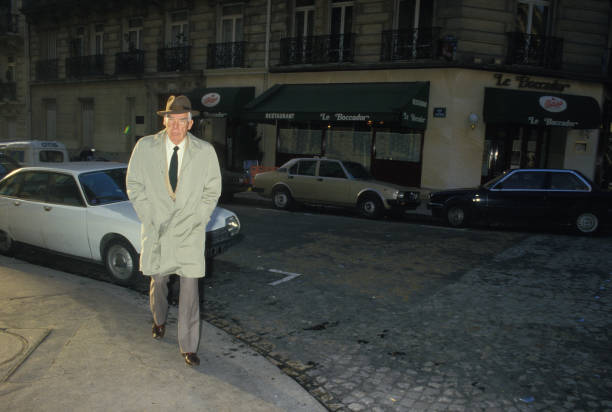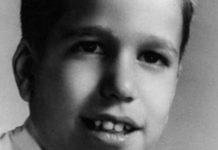The best of those studio directors who, more or less the same age as Orson Welles, began working in movies within a decade of “Citizen Kane” (1941) represent Hollywood’s “greatest generation.” Survivors of the Great Depression and often veterans of World War II, they fought the good war against assembly-line filmmaking. Robert Aldrich (1918-83) and Nicholas Ray (1911-79) were two.
Both men specialized in unconventional genre movies with larger-than-life antiheroes. Their vigorous melodramas and baroque action films were often self-consciously American. Like other members of the greatest generation, they were influenced by Ernest Hemingway’s emphasis on rites of midcentury existential manliness — although Aldrich’s “Emperor of the North” (1973), out on Blu-ray from Twilight Time, was inspired by the writing of and about Jack London, Hemingway’s precursor in literary swagger.
One of the strongest movies of Aldrich’s late career, “Emperor of the North” (a project originally intended for the mad macho man Sam Peckinpah) concerns the near-cosmic struggle between a laconic super-hobo known as A-No. 1 (Lee Marvin) and an implacably sadistic railroad employee (Ernest Borgnine) called simply the Shack, hobo slang for brakeman. The Shack is a killer who has never allowed a vagrant aboard his train; the ’bo who gets by him will be crowned Emperor of the North Pole, a pointedly meaningless honor that gave the movie its original title.
“The Road,” London’s memoir of riding the rails, was a tale of the 1890s; Christopher Knopf’s screenplay updates the action to 1933. The movie’s tone is post-“Bonnie and Clyde” Hollywood new wave, a scenic outlaw ballad mixing instances of extreme violence with ragtime high jinks. Lyrical passages with the sunlight streaming through the boxcar slats slam up against brawny Soviet-style montages of steel and steam. There are flickers of soft-focus period nostalgia, but the movie’s anti-authoritarianism is as resolute as the snub nose on Marvin’s fist-like face.
“Emperor of the North” opened a year after Martin Scorsese’s underappreciated “Boxcar Bertha” starred Barbara Hershey as a rail-riding union organizer. But Aldrich’s movie — a briefly glimpsed and appropriately hard-boiled young woman aside — plays out in an almost exclusively male world. Romantic interest, such as it is, is provided by a good-looking, aggressively callow aspiring hobo (Keith Carradine) named Cigaret (after London’s on-the-road nom de guerre), who functions as A-No. 1’s unwilling sidekick and pesky nemesis.
A-No. 1 is a canny operator, and so is Aldrich, who manages to spin a yarn at once discursive and streamlined. The action, filmed in and around Cottage Grove, Ore., on the same stretch of tracks as Buster Keaton’s “The General,” never leaves the sylvan Northwest. The ultimate battle, waged with chains, planks and axes between two primeval forces atop a speeding train, caps what finally comes to seem an abstract contest in time and space — a he-man illustration of the Johnny Mercer song “Something’s Gotta Give.”
“Wind Across the Everglades” (1958), directed by Ray from a screenplay by Budd Schulberg, a writer in the Hemingway mode, is another atmospheric, location-rich action film.
Set in the Florida Everglades in the early 1900s, the movie, out on DVD from Warner Archive, pivots on the mortal combat between two equally determined men. That this struggle pits Burl Ives’s brutal swamp rat, a poacher known as Cottonmouth (for the pet water moccasin in his pocket), against Christopher Plummer’s dedicated game warden, mockingly called Bird Boy, provides a backbeat of absurdity.
The movie’s tough-guy writer (brother to the producer Stuart Schulberg) and its bad-boy director were fiercely at odds. Fired before “Wind” wrapped, Ray rarely spoke of the film; Schulberg published his script but regarded the movie as a cobbled-together disaster. Yet in faraway France, the young critics of Cahiers du Cinéma saw “Wind” as additional proof of the director’s genius.
The war between Cottonmouth and Bird Boy (and perhaps Schulberg and Ray) makes for a compelling, occasionally brilliant mess. No one’s idea of an auteurist, the New York Times critic Bosley Crowther wrote that while “Wind” “happens to be one of the most disordered professional motion pictures we’ve ever seen, it also happens to be unusual, robust and picturesque.” Not to mention deeply and perhaps unintentionally idiosyncratic.
The surrealism is heightened both by inserted wildlife footage worthy of the National Geographic Channel and the lacunae left by truncated subplots. Bird Boy gets moral support and a Star of David pendant from a family of Jewish immigrants whose back story is never fully explained. Similarly, the absence of scenes identifying Cottonmouth’s teenage protégé as his son suggests that the boy may be his paramour, adding a possible subtext to the swamp rat brotherhood. Aside from a brief scene in a bordello (run by the retired stripper Gypsy
Rose Lee), there is little preparation for the drunken face-off between Bird Boy and Cottonmouth, which ends with the all-American declaration “Here’s to livin’ free!”
Creepy reptiles share screen space with colorful supporting players. Schulberg may have been responsible for packing Cottonmouth’s gang with the circus clown Emmett Kelly, the jockey Sammy Renick and the heavyweight boxer Tony Galento, as well as casting the Pulitzer Prize-winning writer MacKinlay Kantor as a local judge, although Ray, who once programmed folk singers (including Ives) for the Voice of America, was more likely responsible for recruiting the Florida R&B artist Rufus Beacham (uncredited) as a fancy-house piano player.
Neither “Emperor of the North” nor “Wind Across the Everglades” is “Citizen Kane” (or even Welles’s last studio film, “Touch of Evil”). But both attest to a time when Hollywood often produced unheralded, offbeat, personal works of art.
‘Emperor of the North’ and ‘Wind Across the Everglades’: Fighters in Nature and Showbiz

















